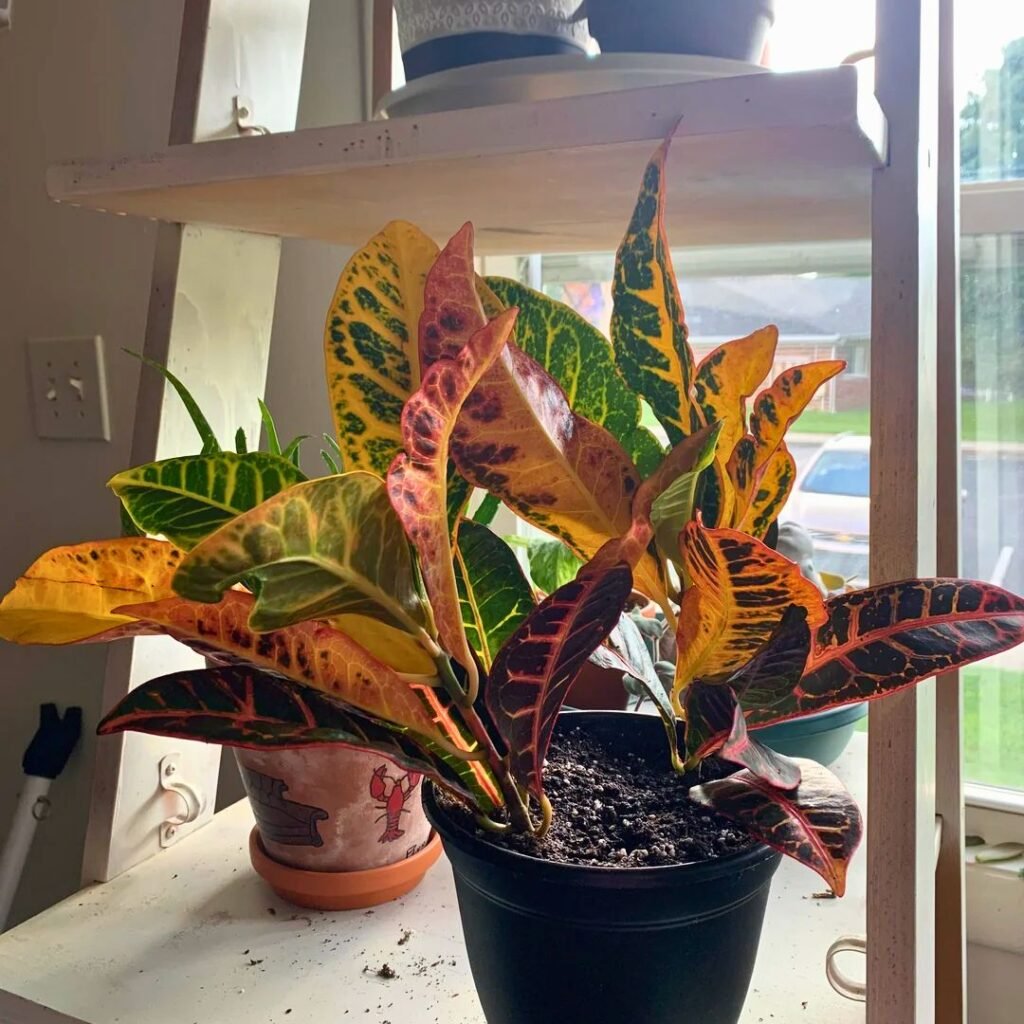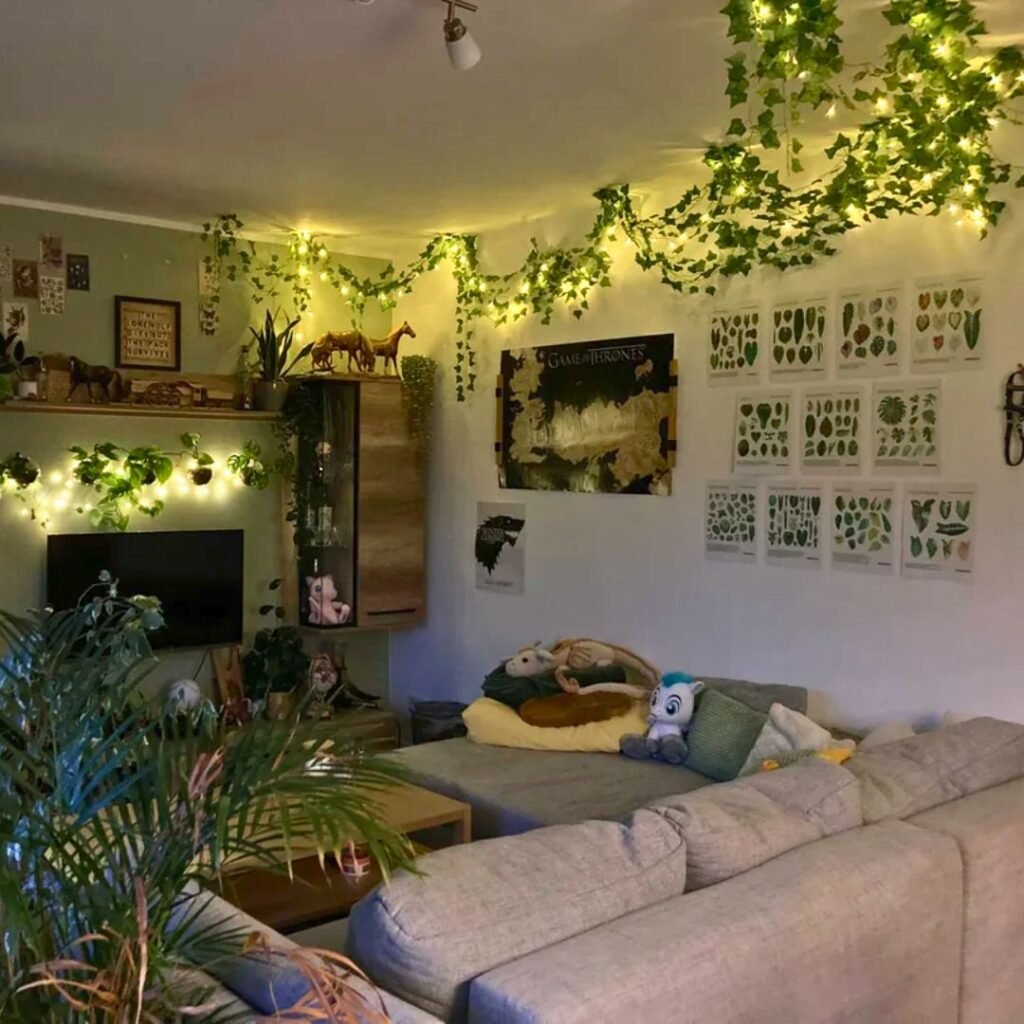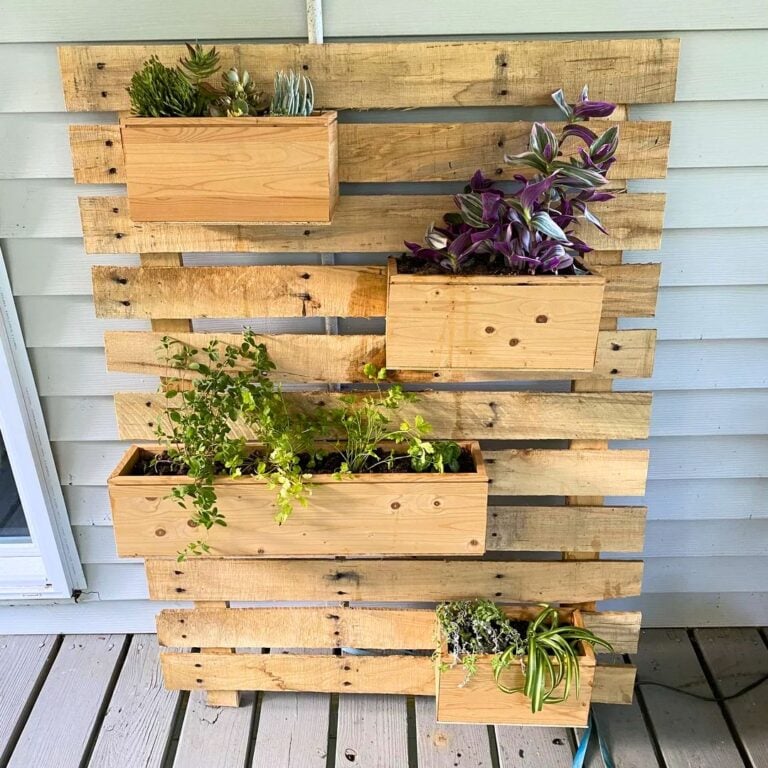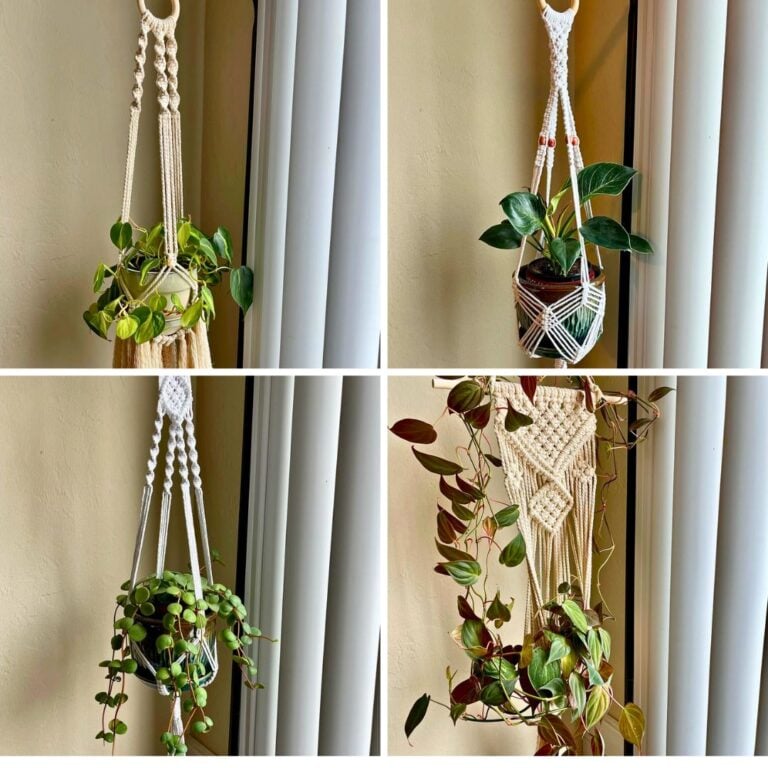7 Clever Ways to Add Warmth with Houseplants
I’m always looking for ways to make my place feel cozier, and honestly, houseplants are my go-to.
Bringing plants inside just makes everything feel warmer and more inviting.
Even a couple of small changes can totally shift the mood.
Plants have this way of creating a relaxed vibe and brightening up any room. They add color, life, and that gentle touch that makes a house feel more like home.
Please note: Simplify Plants is reader-supported. As an Amazon Associate, I earn from qualifying purchases made by our readers with no extra cost added to you all! Some links in the post are affiliate links and I get a commission from purchases made through links in the post.
1) Use terracotta pots for earthy warmth

Honestly, terracotta pots just warm up a room in a way that plastic or metal never could. That burnt orange shade is so earthy and cozy—it’s basically instant atmosphere.
I like how terracotta pots pull in the natural wood tones from floors and shelves. It’s like everything gets tied together, but I don’t have to redecorate.
You can find terracotta pretty much anywhere, and it’s super affordable. I love mixing pot sizes—tiny ones on the windowsill, bigger ones on the floor—it all feels relaxed and lived-in.
Another thing: terracotta’s porous material lets plants breathe. My plants seem happier and I don’t have to worry about soggy soil.
Sometimes I’ll get crafty and paint patterns or names on my pots, just for fun. Even left plain, they’ve got that charming, rustic look.
If you’re just getting started, a few terracotta pots really do make a difference. They’re tough, too—I’ve dropped a couple and they survived.
It’s honestly one of the easiest ways to warm up a space and show off your favorite plants at the same time.
2) Place rubber plants near natural light

I can’t get enough of rubber plants—their shiny, deep green leaves just look so good, especially in the sunlight.
I always put mine near a window where there’s plenty of natural light. The leaves stay glossy and healthy, and the whole plant just pops.
When sunlight hits those leaves, they get this soft glow that feels really inviting. It’s kind of amazing how much warmer a room can feel with just one well-placed plant.
Even when it’s cold outside, my rubber plant keeps its color if it gets enough daylight. It’s a simple way to keep the space feeling alive.
I do avoid harsh, direct sun though—nobody wants crispy leaves. Filtered light is definitely the way to go.
If you want your home to feel both cozy and fresh, try putting a rubber plant by a bright window. I always tell my friends to do this, and they’re never disappointed.
3) Group kalanchoe for colorful vibrance

Kalanchoe is my secret weapon for adding color. The flowers are tiny but come in the brightest reds, yellows, oranges, pinks, and whites.
Grouping a few together makes any spot look lively and inviting.
I’ll line them up on a windowsill or cluster them on a coffee table. The colors just pop against the green leaves and make everything feel more energetic.
They’re super easy to care for, too—just lots of light and water when the soil’s dry. The blooms last for ages, which is always a win.
Mixing different flower colors and pot styles keeps things fun and personal. I like that I can fit them anywhere—kitchen, living room, even the bedroom.
Whenever I need a pick-me-up, kalanchoe is my go-to. It’s affordable, simple, and people always notice how cheerful they look.
4) Add soft moss for texture

Moss is one of my favorite ways to add a soft, cozy feel. There’s something about those gentle green shades that just works.
You can grab a bag of preserved moss at most garden stores. It doesn’t need any care and somehow always looks fresh.
I’ll tuck moss around the base of my potted plants to cover up the soil. It gives the pot a finished look and adds a soft texture that stands out.
Moss pairs well with almost any plant. I especially love it with leafy greens and succulents, or in little bowls and terrariums for a mini woodland vibe.
It’s not just pretty—it helps keep soil from drying out too fast. I just make sure not to pack it too tightly so the plant can breathe.
Mixing different types of moss—some bright, some dark—makes displays even more interesting. It’s easy to shape, so I can change things up whenever I want.
For such a small detail, moss really does make a big difference.
5) Incorporate warm-toned wooden stands

I’m a big fan of warm-toned wooden stands for plants. The rich browns and golds just make everything feel cozier.
A wooden stand lifts the plant off the floor or table, making it feel special and spreading warmth around the room.
I usually go for walnut, oak, or bamboo stands—their colors match almost anything. Sometimes I’ll hunt for vintage or handmade ones for a little extra character.
Mixing different stand heights keeps things interesting. Tall stands in corners, short ones by windows—it all adds up to a lively but not cluttered vibe.
Wooden stands are practical, too. They keep water off my floors and hold even my heavier pots.
Curved legs or round shapes make the space feel softer and less boxy. Occasionally, I’ll paint or stain a stand to match my mood, but even plain wood feels homey.
I try to find stands that fit my pots just right, so nothing wobbles. They really never go out of style and work in any room.
It’s a simple way to add warmth, no matter what the weather’s doing outside.
6) Display autumn-hued croton leaves

Croton plants are my go-to for instant color. Their leaves glow in reds, oranges, and yellows—basically autumn in plant form.
I’ll put a croton on a windowsill or table, and suddenly the room feels so much cozier. Even one plant can brighten things up.
The leaves come in all kinds of shapes and wild patterns, from paint splatters to bold stripes. There’s always one that fits my style.
I like putting crotons in rooms that need a pop of color, like the kitchen or living room. The leaves really do look like they’re changing, just like fall trees.
If there’s a dark corner, I’ll move a croton there—it never fails to warm things up. The colors stand out against any wall.
They love lots of bright, indirect sunlight. I make sure they get enough so the colors stay bold.
To keep them happy, I let the soil dry a bit before watering. That’s about it, and the leaves reward me with those gorgeous colors.
Mixing crotons with green plants makes the colors pop even more. Sometimes I’ll group them with ferns or pothos for contrast.
Croton leaves bring that fall feeling year-round. It’s the easiest way I know to add warmth, no matter the season.
7) Use string lights around trailing plants

String lights are just magic, aren’t they? My favorite trick is wrapping them around trailing plants.
The lights highlight those tall, upright leaves and give the room a gentle, cozy glow.
I usually stick with simple white or warm yellow lights for the softest vibe. Battery-powered is best—I can move the plant anywhere and not worry about outlets.
I loosely drape the lights between the leaves, making sure not to pull too tight. The soft light draws attention to the plant’s shape and color without being harsh.
trailing plants are tough, so they can handle the lights easily. I always double-check that the lights aren’t getting hot, just to be safe.
Adding string lights to trailing plants makes my living room feel warmer and more welcoming, especially at night. It’s a tiny change, but it really lifts the whole mood.
Understanding How Houseplants Influence Home Atmosphere
I notice houseplants totally change how a space feels. Bringing greenery inside shapes the mood and vibe of my home in ways I never expected.
The Psychological Impact of Greenery
Adding green plants to my rooms just makes me feel calmer and happier. There’s something about seeing living leaves that softens a space.
For me, houseplants help ease stress and even boost my focus. They remind me of nature and break up empty or plain spots.
If I’m tired or in a funk, a bit of green can lift my mood.
Benefits of greenery in the home:
- Makes rooms feel more welcoming
- Offers a sense of peace and relaxation
- Reduces stress and tension
Having a plant by the window or on my desk is a simple way to feel just a little bit better every day.
Color and Leaf Texture for a Cozy Feel
The color and texture of a plant’s leaves really change the vibe of a room. I tend to pick plants with deep green or variegated leaves—they just add so much richness and depth.
Soft, fuzzy leaves—like on a velvet leaf plant—somehow make corners feel gentler and more restful. On the flip side, plants with glossy or broad leaves bounce light around, which brightens things up in a way I love.
Trailing or arching stems? They’re great for breaking up those harsh lines, making everything feel softer and, honestly, a lot more inviting.
If I compare a spiky cactus to a leafy fern, the difference is wild. Leaf shape and surface really set the tone—modern and crisp, or soft and homey.
Here are three leaf qualities I always look for to add warmth:
- Rich green hues
- Soft or textured surfaces
- Full, layered foliage
Practical Tips for Maintaining a Warm Environment With Plants
A cozy space just feels better when I pay attention to temperature, moisture, and how the sunlight filters in. Balancing these basics helps both my plants and my living space feel warmer and more comfortable.
Seasonal Care to Maximize Comfort
When seasons shift, I tweak my plant care routines to keep things pleasant. In winter, I move plants away from drafty windows and heat vents. Cold air can shock roots, and hot air dries out leaves.
I always wipe dust off the leaves so they breathe better and look a little fresher.
During summer, sheer curtains are a lifesaver for filtering harsh sunlight. This keeps delicate plants from sunburn and, bonus, it stops my room from heating up too much.
I check for stress signs—wilting or yellow leaves—and trim away the dead bits so new growth can take over.
A small spray bottle for misting is always nearby, especially in dry seasons. Regular misting adds humidity, which makes the space feel warmer and cozier, especially when heaters dry out the air.
Balancing Light and Humidity
Getting the right mix of light and humidity is key for a warm, cheerful room with happy plants. I put leafy plants near east or south-facing windows for bright, gentle light.
If a spot gets too much sun, I’ll use blinds or sheer curtains to soften things up and prevent leaf burn.
Grouping plants together makes a mini “green zone” that keeps moisture in the air. Some days, a small humidifier helps boost the humidity, especially if I see brown tips or crispy edges.
Both light and moisture really matter for how my plants grow and how welcoming my space feels.
Here’s a simple checklist I keep in mind:
| Tip | Why It Works |
|---|---|
| Group plants | Keeps air moist |
| Use sheer curtains | Softens sunlight, avoids heat |
| Mist leaves | Raises humidity |
| Wipe leaves | Helps plants “breathe” better |
| Adjust locations | Protects from drafts or heat |
It’s not complicated—I just pay attention to these details and tweak things as I go. My home and my plants seem happier for it!
Frequently Asked Questions
The right plants, pots, and display ideas make my home feel way cozier and more inviting. With a few easy care tips and smart placement, it’s simple to add warmth—even in a small or dim room.
What types of plants are best for creating a cozy indoor environment?
I like rubber plants, snake plants, and kalanchoe. They’ve got deep green leaves and sometimes even colorful flowers. Plants with rich foliage or warm colors just feel snug indoors.
How can I use plants to enhance the warmth of my living space?
I use terracotta pots and warm wooden stands to get that earthy, welcoming vibe. Grouping plants and adding moss or other soft touches helps make the room feel more inviting.
What are some low-maintenance houseplants that add a warm feel to a home?
Snake plants, pothos, and rubber plants are my go-tos. They’re easy, adaptable, and need very little attention. Plus, they offer bold greenery that stands out.
Can you suggest creative ways to display plants indoors for a warmer atmosphere?
I like clustering plants on wooden shelves or playing with different heights using stands. Matching pots and adding decorative stones or moss can really set a cozy mood.
How does the placement of houseplants affect the perceived warmth of a room?
If I put plants near natural light or at eye level, the whole space feels more alive and warmer. Filling up empty corners or framing windows with greenery softens the whole room.
What are some tips for incorporating plants into small or dimly-lit spaces to make them feel more inviting?
I usually go for compact plants—think succulents—or just tuck a few pots onto shelves or windowsills.
Honestly, picking plants that can thrive in low light makes such a difference. ZZ plants or peace lilies, for example, can really liven up those shadowy corners and make a space feel a bit cozier.
Recommended Garden Supplies
| Product Image | Our Recommended Gardening Supplies | Check Offers! |
|---|---|---|
Top Top
Top
Top
Top
Top
Top
Top
Top | rePotme Houseplant and Tropical Classic Potting Soil Mix | Check Offer On Amazon |
 Top
Top
Top
Top
Top
Top
Top
Top | Espoma Organic Indoor Plant Food | Check Offer On Amazon |
 Top
Top
Top
Top
Top
Top
Top
Top | GooingTop LED Grow Light 6000K Full Spectrum Clip Plant Growing Lamp | Check Offer On Amazon |
 Top
Top
Top
Top
Top
Top
Top
Top | Soil Moisture Meter | Check Offer On Amazon |
 Top
Top
Top
Top
Top
Top
Top
Top | Govee Hygrometer Thermometer, Bluetooth Enabled! | Check Offer On Amazon |
 Top
Top | LEVOIT Humidifiers for Large Room(Best For Plants) | Check Offer On Amazon |
 Top
Top
Top
Top
Top
Top
Top
Top | Upgraded DIY Automatic Drip Irrigation Kit, 15 Potted Houseplants Support | Check Offer On Amazon |
 Top
Top
Top
Top
Top
Top
Top
Top | Stainless Steel Heavy Duty Gardening Tool Set | Check Offer On Amazon |
 Top
Top
Top
Top
Top
Top
Top
Top | Bonide Insecticidal Soap | Check Offer On Amazon |
 Top
Top
Top
Top
Top
Top
Top
Top | Bonide 32 oz Spray Neem Oil for Organic Gardening | Check Offer On Amazon |
 Top
Top
Top
Top
Top
Top
Top
Top | Garden Safe Fungicide | Check Offer On Amazon |





